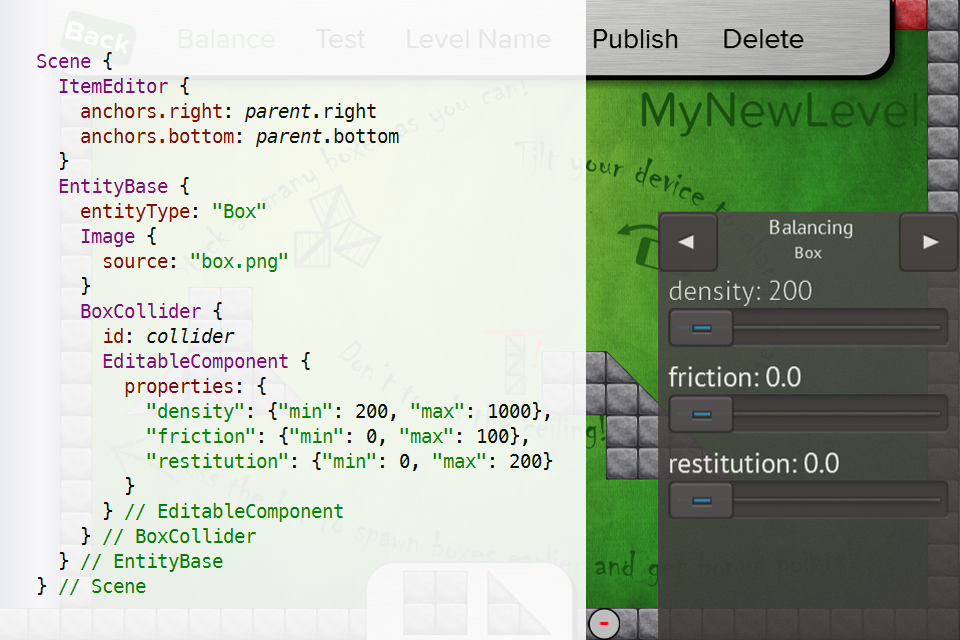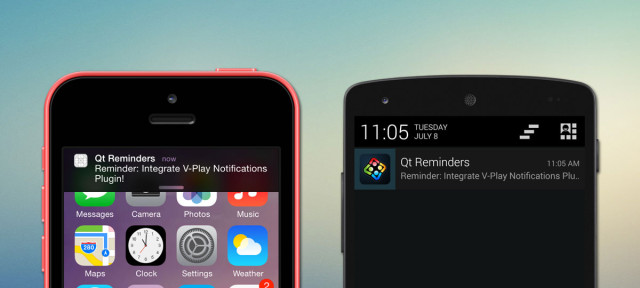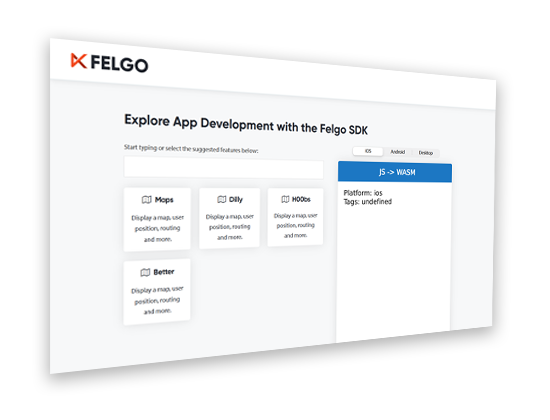For your game to be successful, you need to create something that players come back to time after time. A player retention strategy can aid you in achieving this success. Follow these tips and your players will return to your app or game for more every time.
1. Make A Great First Impression
Player retention means getting players to come back and play your game more than once. But before you can even start to think about that, you need to make a great first impression. The figures by Localytics as of September 2015 suggest that 58% of app users become inactive in their first 30 days.
In order to avoid this, you need to give users a positive first experience. What do people want to do once they’ve downloaded your game? They want to get playing and find out if they like it.
If you’ve got a simple game that you think players can learn on their own, let them play without interruption. If you’ve got a complex game, you should have a quick tutorial that players can choose to play. Making players sit through boring starter tutorials is a big turn-off.
A great first impression means having as few barriers to fun for first-time players as possible. You need to get people playing and hopefully, they’ll enjoy it enough to come back themselves.
Download Felgo Now and Engage Your Players With These Awesome Tips!
2. Have a Functional User Interface
The user interface of your game needs to be simple to navigate and easy on the eye. Having a clunky or ugly user interface turns people off your game. Players need to interact with your interface for every game session so it’s important to get this step right.

There are a couple of steps suggested by PaladinStudios that you can take to prevent poor user interface design. The first thing you can do is find a game in a similar genre to yours to use as a reference. After that, you need to decide on the user flow of your interface. Once you’ve completed these steps it’s time to wireframe your interface and then finish up your design. Then you’ll have to test for good functionality.
A good interface gives players the information they need, when they need it. If navigating the user interface of your game requires more than minimal effort, it’s time to go back to the drawing board.
3. Challenge Players Appropriately
If you start playing a new game and you die every single time the game starts, what do you do? A lot of people stop and play a game where they can enjoy themselves. It’s difficult for people to become invested in a game where they’re set up to fail.
Have you ever played a game where you passed the first few levels without making a single mistake? Is it fun playing a game that’s too easy for you? Most people stop playing a game as soon as they know they’re going to win every time.
Setting appropriate challenges is key to making sure your players keep coming back to play. Unless you explicitly say your game is super hard or very easy, players expect the level of difficulty to increase as they play through your game. And if you want your players to make it to your last level, you have to make sure that they’re challenged until that point.
Balance your game levels with these 8 tips by PollJoy with new players in mind. It can be easy when testing to balance the game for yourself, but you know the game better than anyone before it gets released. Appropriate levels of difficulty at appropriate times will be a definite improvement to your player retention strategy.
To accelerate your balancing progress, Felgo provides the ItemEditor and LevelEditor components. See here for a demo of how they work.
4. Get Your Session Length Right
Players need to attain a certain level of enjoyment when they play your game. If they know they can have some fun in a certain amount of time, there’s a good chance they’ll keep playing.
Do RPG’s and Puzzle games normally get the same amount of game time? If you’re developing a casual puzzle game, your game sessions probably need to be short. If you’re making an RPG, your game sessions usually need to be long and engaging. Knowing the appropriate session length for your game genre is crucial.

When deciding on the average session length of your game, you need to consider your audience. Do adults play games while they’re commuting to work and want to play for the same duration as a child with no responsibilities? Probably not. Your adult players will have one eye on the time and won’t hesitate to quit your game if something of a higher priority comes along. Your average game session depends on your type of game and your audience.
One way to find out the ideal game session for your game is to use an established game as a reference. Download the most popular game in your genre, play a few levels and time the game sessions. You can use this as a base for your own game session length. Maybe you can even find a tweak that improves upon the popular game’s session length.
5. In-Game Achievements & Daily Rewards
Giving your players mini-goals can be a simple way to ward of game fatigue. In-game achievements and daily rewards allow you to boost the morale of players on a regular basis. This effective technique can be a major part of your player retention strategy.
In-game achievements mirror our real-life needs for basic things such as food and money. By earning achievements in a game, we get the same feeling of satisfaction as we do in real life when we attain essential items. You can have a range of in-game achievements, varied by difficulty, for players to aim for.

Daily rewards work well as a player retention tactic because it encourages people to play your game every day. If they can have more fun simply by playing every day, then they’re likely to stick around to play for longer.
The Felgo Game Network helps you set up your game with cross-platform achievements and leaderboards within 10 minutes. See here how to add it to your game.
6. Release Regular Updates
Regular updates are a smart way to keep people playing. This tip improves player retention in a couple of different ways.
First of all, regular updates let players know there’s still someone working on the game. This means that you’ll be able to offer them support if any issues arise or changes are made to a platform. Knowing the game won’t suddenly stop working is reassuring to players.

Updates also improve your player retention strategy by informing users that new levels and features will be added to the game in the future. Angry Birds Rio achieved this by showing the date new levels would be added to the game before they released an update. This builds excitement for players and gives them a reason to keep playing if they’ve already completed the available levels.
The most important thing is to release these updates regularly. Players won’t hang around forever for the next update even if you promise them the world. Plan your updates ahead of time and release them periodically to make sure players continue to return to your game.
7. Send Push Notifications
Push notifications are a powerful tool for you to connect with your players. With push notifications, you can send messages to players asking them to do things like rate or review your game in your app store of choice. You can also use it to remind players if it’s their turn to play or if you’ve added new features to your game.
First you’ll have to get players to opt in for your Push notifications. To do this, you need to carefully place your Push Notifications request in a part of your game where it’s most likely to get approved. Research by Sensortower has shown that these requests get approved more often if they follow a tutorial. If a player thinks your game is fun, they’re more likely to want to know about it.
Another tip is to use a nicely designed splash screen that clicks through to the Push Notification request screen. Native Push Notification request dialogues aren’t the most beautiful things in the world. A well-designed splash screen with your own copy could prove to be a lot more effective at getting opt-ins.
It’s important to remember that Push Notifications are a double-edged sword. Send notifications when you have something really important to tell people and they’ll value your messages. Asking people for a review every day could push them into the arms of another mobile game.
You can use the Felgo Plugins for local push notifications and remote or server push notifications in your game or app. Local push notifications are sufficient if you want to trigger the notification 24 hours after the user last opened the game for example. Remote push notifications are the way to go if you have a server logic that decides when to send a notification and to which players. E.G. you could send a push notification to all users from Germany who played at least once in the past month.
8. Community Gaming
When people find out that other people enjoy a game, it validates their own enjoyment of it. That’s why building a community around your game is one of the most powerful player retention tools you can employ. Once you have a group of players that relate to each other, they’ll be encouraged to stick around to play and talk about it with the community.
There are many different ways to build a community. One simple technique is to have a leaderboard for your game. Leaderboards encourage competition between players and give people an identity within the game’s community.
Another option is to have an online forum or social media presence where people can discuss their affinity for your game with like-minded gamers. The great thing about having an online community is anyone can involve themselves, even people that are yet to play your game.
You can set up a leaderboard with Felgo using the Felgo Game Network. It’s available to all license types so anybody can try it out. You can find out more about it here.
9. Let Users Generate Content
Once you’ve got a community, you need to engage them and make sure they engage each other. One way to do this is to include a level editor in your game. It’s a fun way for community members to interact with each other and it also adds new playable content to your game.

User-generated content helps your player retention strategy because it’s now possible that you’ll have a never-ending supply of playable content. You don’t even need to develop the levels yourself anymore. Users can also rate each other’s levels and have new content to talk about.
Get your players to interact with each other by creating their own levels and they’ll hang around to play your game for longer. The Felgo Level Editor allows you to edit levels on the fly and test them straight away. This technique is also used in popular games like Super Mario Maker or Little Big Planet. You can try out the Felgo Level Editor now; just see here for more details!
10. Harness the Power of Social Sharing
So you’ve set up a community for your game and they’re creating great content for each other. What’s next? Enable social sharing so players can tell the rest of their friends about their achievements in your game.
Being able to post a high-score online is a great community building tool. Players can post high-scores and other players can question them about it or challenge them to do better. Even better, people that are yet to play your game are exposed to your game and know that there’s a pre-existing community for them to join.
You can add social sharing possibilities to your game with only one line of code using Felgo. Just take a look at our NativeUtils function. Also, high-scores and earned achievements are automatically posted to your player’s Facebook timeline with the Felgo Game Network, if they connected their Facebook account. This means zero integration time for you. 🙂
Upgrade Your Player Retention Strategy
When you know more simple steps that will help retain players, let us know in the comments. If you enjoyed this article and you think someone else would too, share it with them! You can use the buttons below.
Download Felgo Now!
Get your free cross-platform development tool and make cross-platform apps and games in just a few days. Felgo was ranked higher than Unity, Corona and Cocos2D for customer satisfaction, ease-of-use and time saving!
More Posts like This
16 Great Sites Featuring Free Game Graphics for Developers
The 13 Best Qt, QML & Felgo Tutorials and Resources for Beginners
21 Tips That Will Improve Your User Acquisition Strategy
7 Useful Tips That Will Improve Your App Store Optimization







